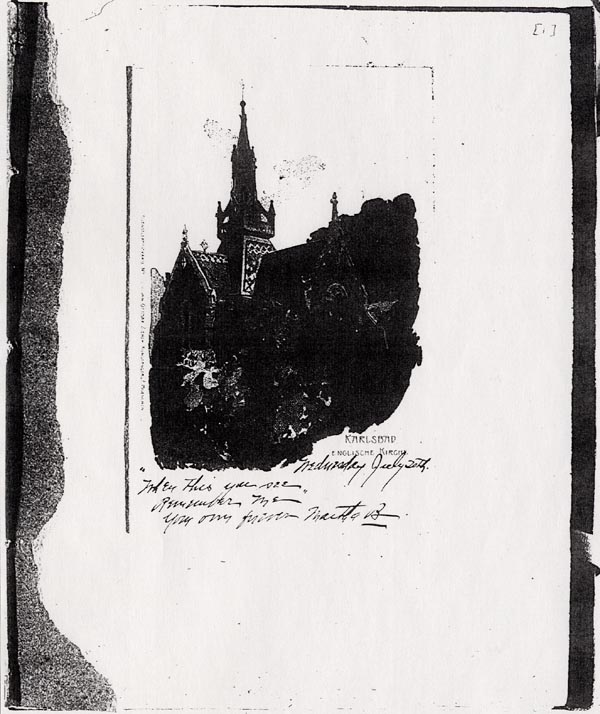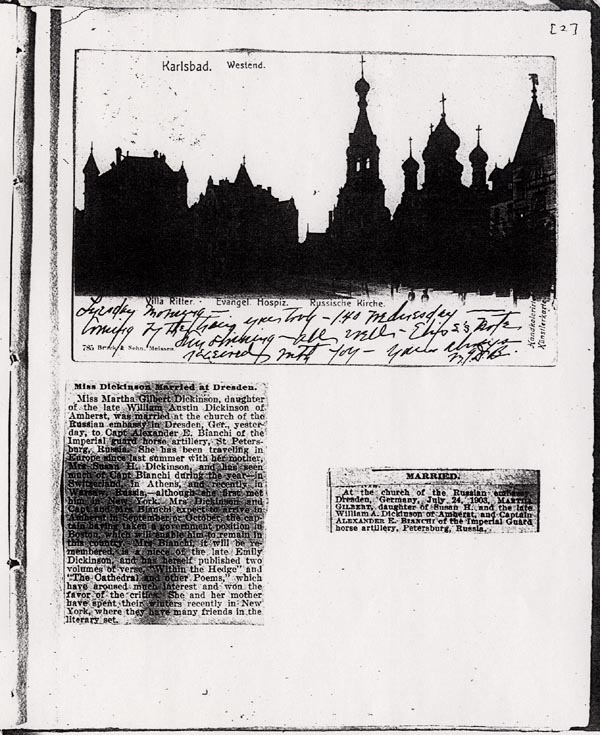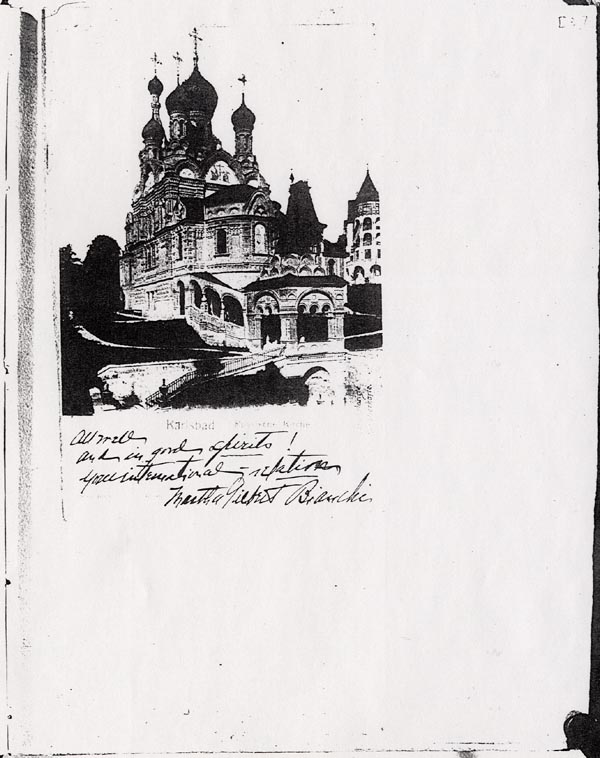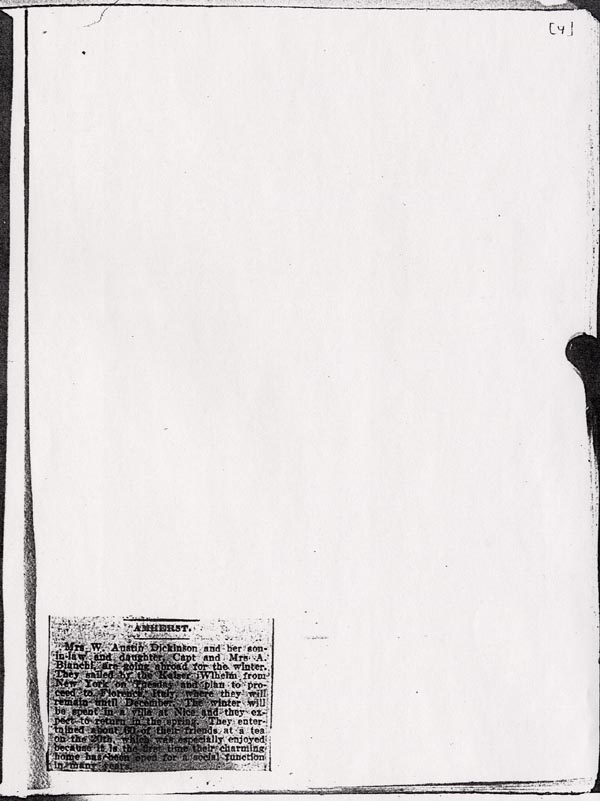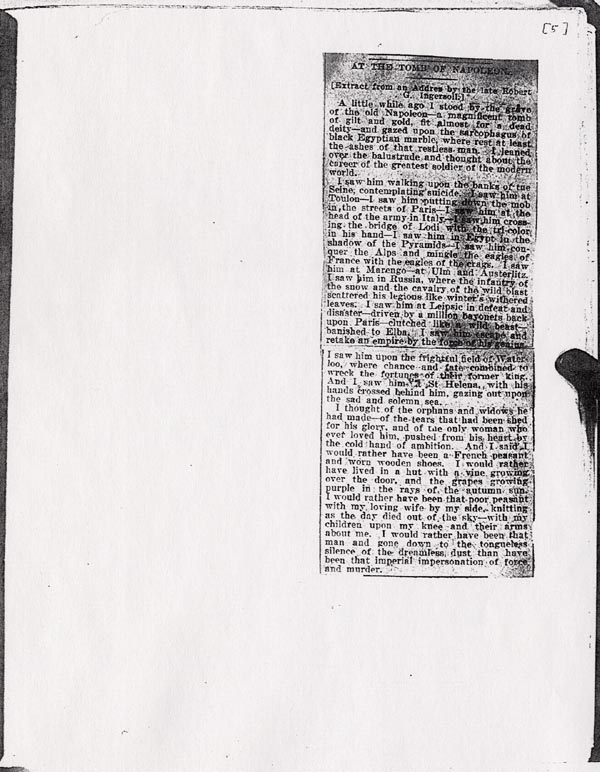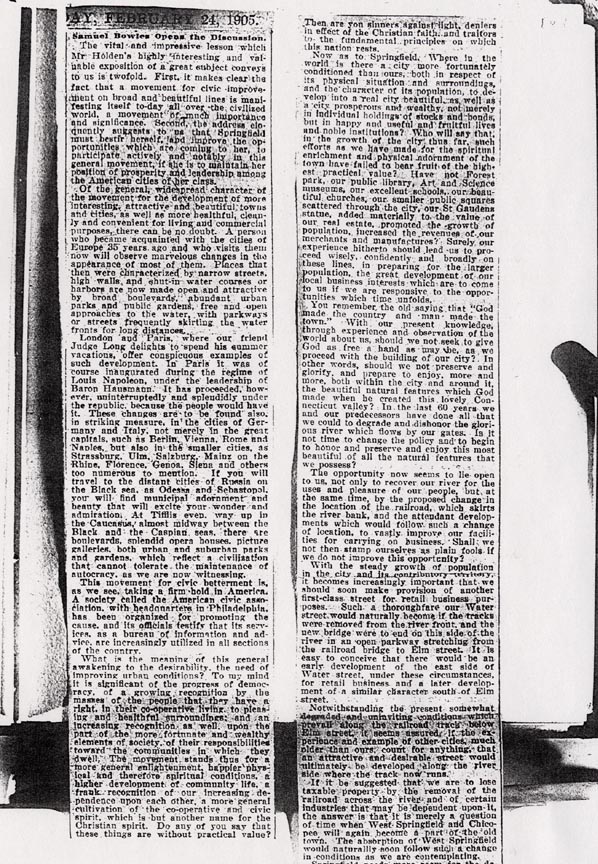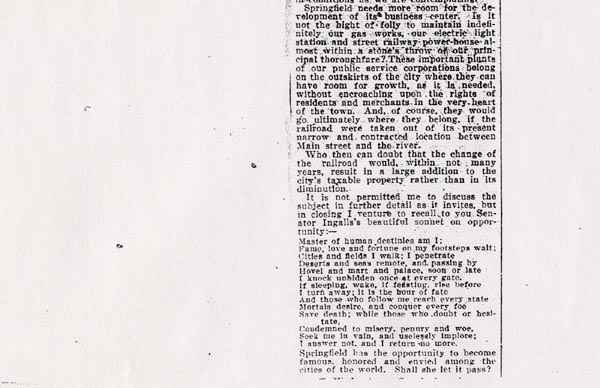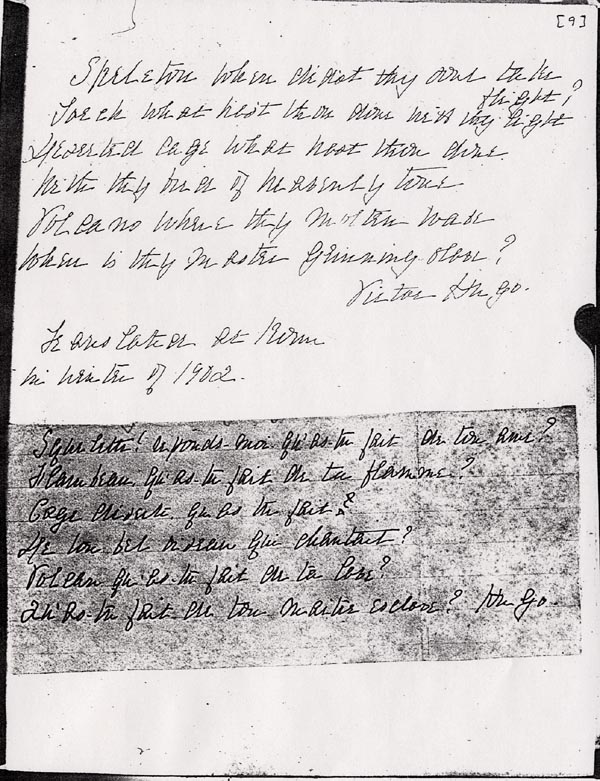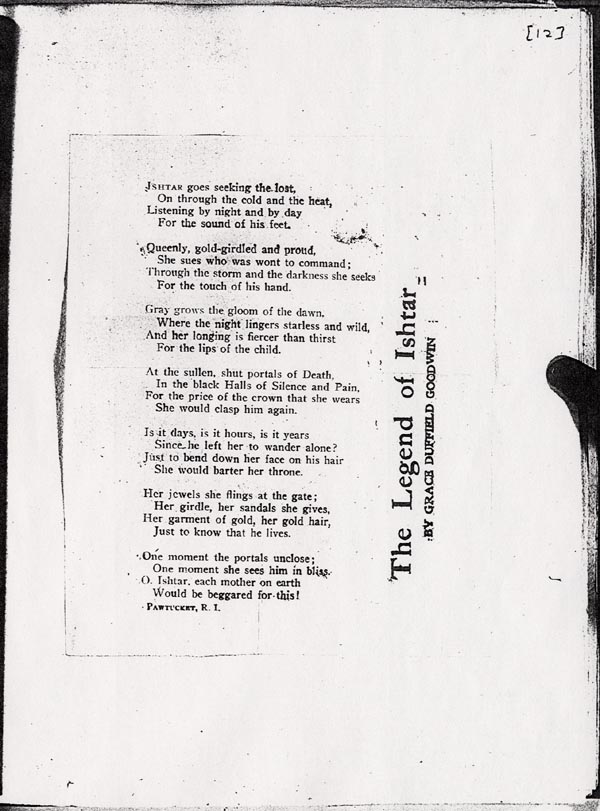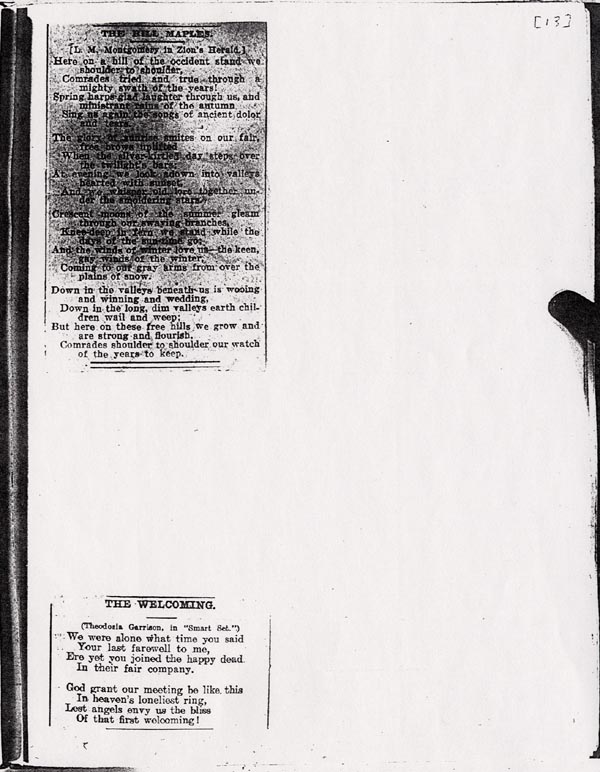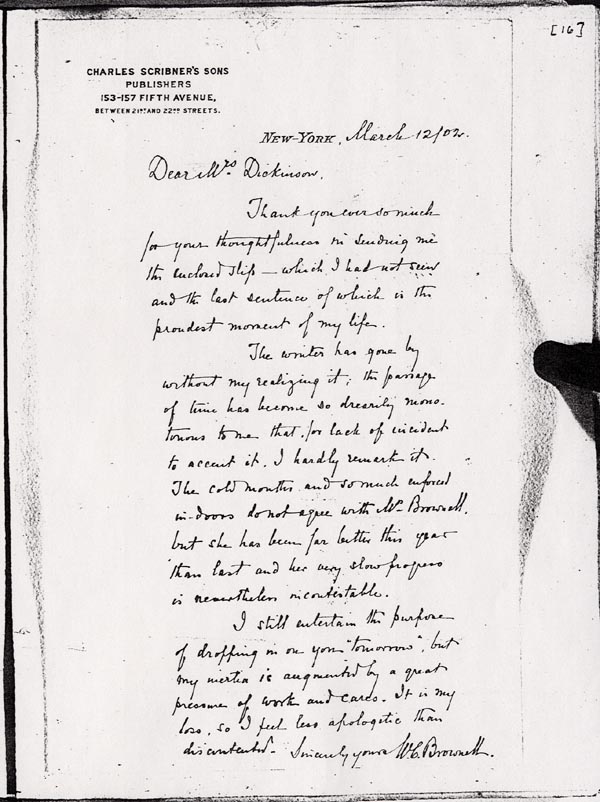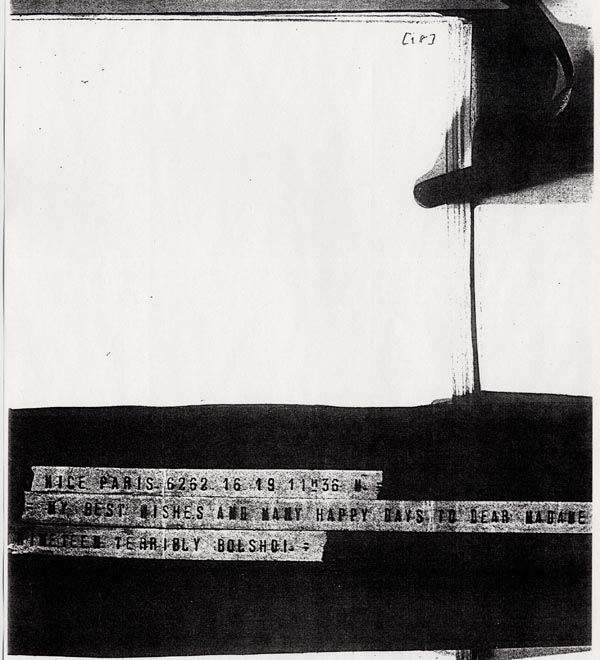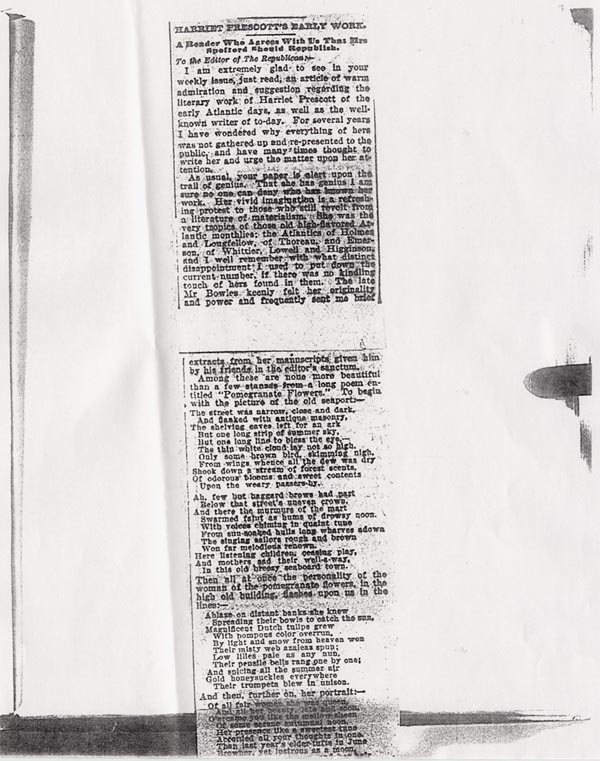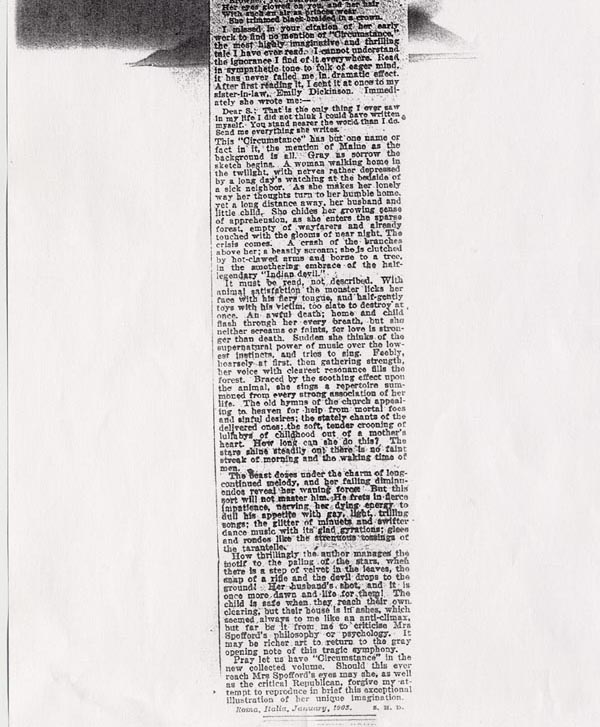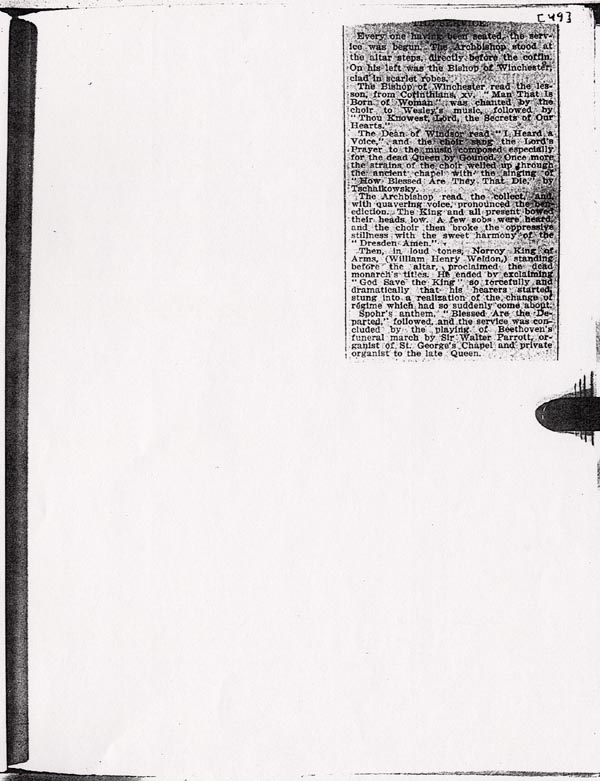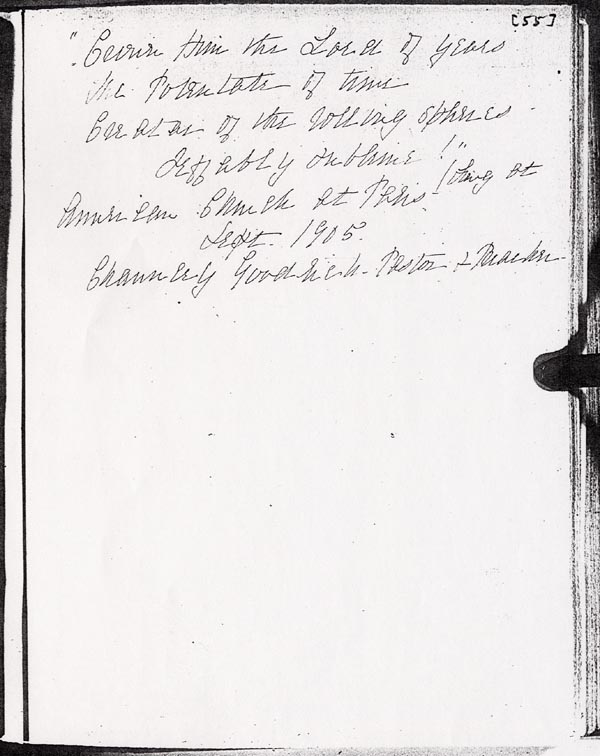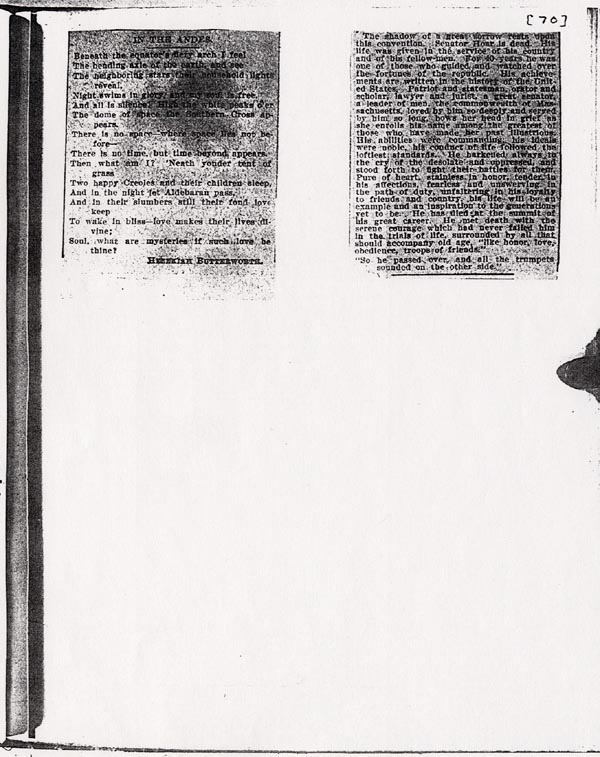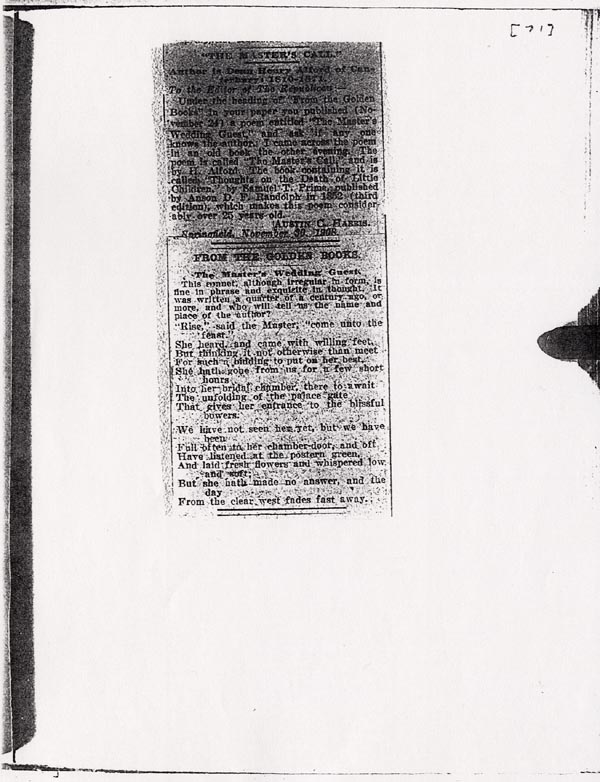Numbered Pages
S.H.D. Commonplace Book (16:35:1),
Martha Dickinson Bianchi Collection,
John Hay Library, Brown University Libraries
Postcards
NotesPostcard dated early 1900s, from Martha Dickinson Bianchi. The literal translation of the German phrase Englische Kirche is English church. This may be Karlsbad's Anglican church built in 1877. This postcard, and the ones on the next two pages of the commonplace book, are from Karlsbad, a town located in the Czech Republic near the border of the German state Sachsen and less than 100 miles from Dresden, where the Bianchis married in 1903. Karlovy Vary, as it is known in the Czech language, was a well-known spa, renowned for its medicinal qualities and patronized regularly by the eighteenth- and nineteenth-century European aristocracy. The spa's famous visitors included Goethe, Schiller, Beethoven, Chopin, Paganini, Marx, and Freud, who mentions Karlsbad in The Interpretation of Dreams:
|
|
Cover Page< transcription > |
Page 1: Postcard from MDB< transcription > |
Page 2: Postcard & MDB Wedding Notices |
Page 3: Postcard from MDB |
Page 4: Travel Notice |
Page 5: "At the tomb of Napoleon"Notes
Robert G. Ingersoll (1833-1899) was a well-known orator on matters
of politics and religion. Though his father was a minister, Ingersoll was
a prominent freethinker, sharply critical of religious orthodoxy.
He was born in Dresden, NY, 13 miles south of Geneva, NY,
where Susan spent most of her childhood.
|
Page 6: "Samuel Bowles Opens the Discussion"< transcription 1, transcription 2, transcription 3 > Notes
John James Ingalls (1833–1900) wrote the sonnet, entitled "Opportunity,"
which Bowles quotes. A politician from Kansas, he later served as
president pro tempore of the U.S. Senate.
|
Page 9: Hugo Verse< transcription > |
Page 12: "The Legend of Ishtar"< transcription > Notes
Known in other mythologies variously as Astarte, Inanna, and Aphrodite, Ishtar is the goddess of love, war, and fertility. This poem treats Ishtar's descent into the underworld. Among various Babylonian and Sumerian versions of the myth no definitive purpose is given for her descent; however, there are various explanations offered: that she goes to visit her sister, Ereshkigal, queen of the underworld, for instance, or that she goes to seize power from Ereshkigal. Goodwin's poem derives from another interpretation of the myth that portrays her descent as a search for the imprisoned Tammuz, a god whose absence from earth has banished spring and summer, a reading that is reminiscent of the more familiar myths of Isis and Osiris, of Orpheus and Eurydice, and of Demeter and Persephone. To gain access to Ereshkigal, Ishtar must forfeit items of apparel at seven gates, and these losses are referenced in the sixth stanza of the poem.
Lines 17-18 of this poem about grief and loss
call to mind lines from Susan's draft poem "One asked, when was the grief?":
|
|
Page 13: "The Hill Maples" & "The Welcoming"
A prolific writer, L. M. Montgomery is best known for her novel Anne of Green Gables. |
Page 15: "The Various Beauty of Winter"< transcription 1, transcription 2 > |
Page 16: Letter from Brownell< transcription 1, transcription 2 > Notes:
A prolific literary critic, W. C. Brownell was a graduate of Amherst College.
In his "Criticism of Criticism of Criticism," H. L. Mencken referred to Brownell
as the "Amherst Aristotle."
|
|
Page 18: Telegram< transcription > |
Page 30: "The Dream-Wind"< transcription > Notes:
William Sharp (1855-1905) was a Scottish poet, novelist, dramatist,
biographer, and travel writer. He is associated with the late
nineteenth-century Celtic revivial and mysticism, and is perhaps
best known by his pseudonym, Fiona MacLeod, who Sharp
apparently believed was a feminine alter-ego whose spirit possessed
him.
|
Page 31: Prescott Review< transcription 1, transcription 2 > Notes:
Susan's observation that "love is stronger than death" echoes Emily Dickinson, who is cited in this piece as an authority on
literature and a fellow admirer of Prescott's work when she
writes Susan,
Susan Dickinson's encounter with Emerson, whose name is noted in the second paragraph of the text,
is recounted on page 11 of her memoir Annals of the Evergreens.
|
|
Page 39: "Rests In Tomb..."< transcription > |
Page 49: "The Service"< transcription > |
Page 55: Goodrich Quote< transcription >
Chauncey W. Goodrich served as pastor in Paris, France,
from 1905-1910 and again from 1917-1923. The quotation
is the first two lines of the ninth stanza of "Crown
Him with Many Crowns"
(Matthew Bridges, The Passion of Jesus).
|
Page 70: "In the Andes" & Hoar Obituary< transcription > |
Page 71: "The Master's Wedding Guest"< transcription >
This poem was also published in Arthur Quiller-Couch's
The Oxford Book of English Verse: 1250-1900 (1919) as "The Bride."
|
Page 91: "The Pursuit of Capt Shays"< transcription > |


